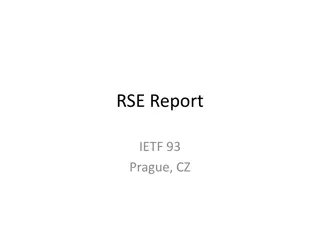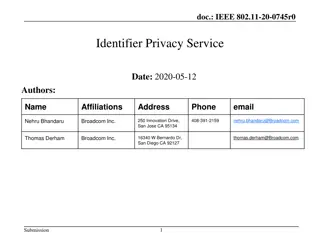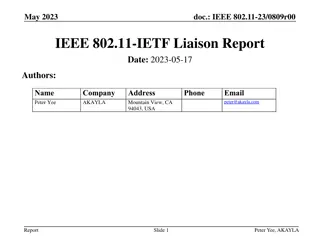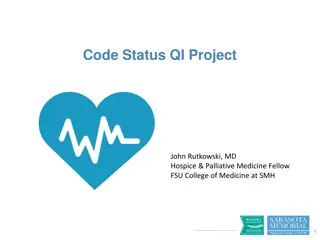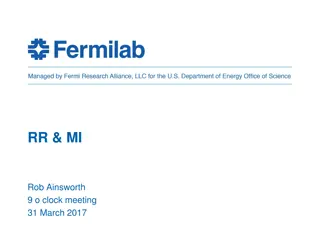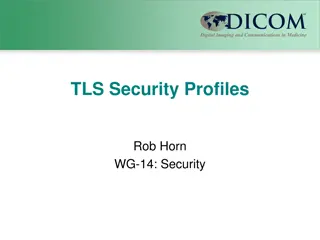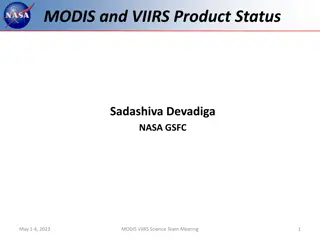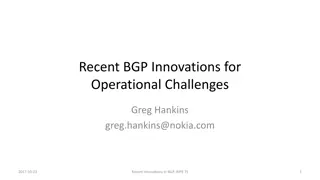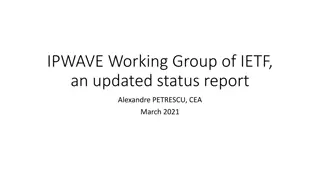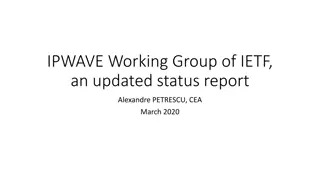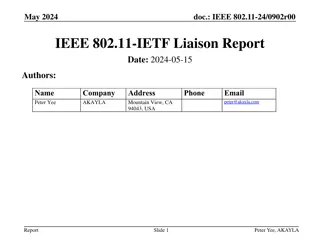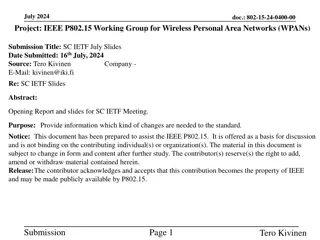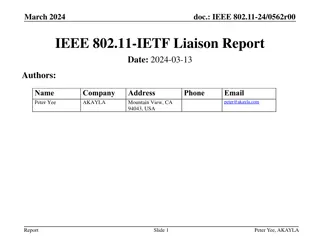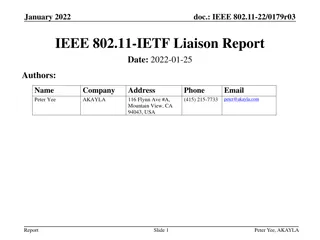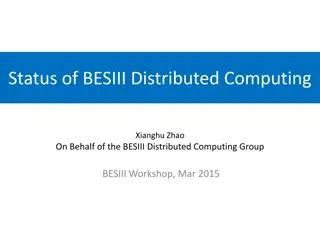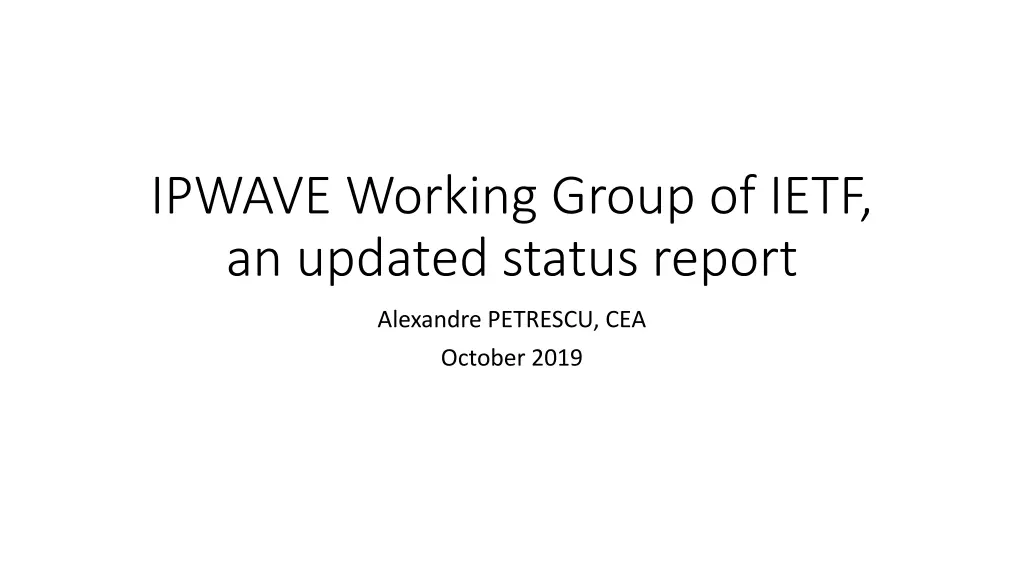
IPWAVE Working Group - Current Status Report
"Explore the latest updates from the IPWAVE Working Group at IETF, focusing on IPv6 over 802.11 and vehicular networking. Learn about the main work items, problem statements, and current status of the group's initiatives."
Uploaded on | 2 Views
Download Presentation

Please find below an Image/Link to download the presentation.
The content on the website is provided AS IS for your information and personal use only. It may not be sold, licensed, or shared on other websites without obtaining consent from the author. If you encounter any issues during the download, it is possible that the publisher has removed the file from their server.
You are allowed to download the files provided on this website for personal or commercial use, subject to the condition that they are used lawfully. All files are the property of their respective owners.
The content on the website is provided AS IS for your information and personal use only. It may not be sold, licensed, or shared on other websites without obtaining consent from the author.
E N D
Presentation Transcript
IPWAVE Working Group of IETF, an updated status report Alexandre PETRESCU, CEA October 2019
Contents What is IPWAVE Working Group Main WG item: IPv6 over 802.11 OCB Additional WG item: Problem Statement and Use Cases Current status Perspectives
IPWAVE Working Group IP Wireless Access in Vehicular Environments (IPWAVE) is a Working Group at the Internet Engineering Task Force (IETF). Works on V2V and V2I use-cases where IP is well-suited as a networking technology . Liaisons with ISO TC 204, SAE, ETSI ITS, IEEE. Group formed in year 2016, after successful Birds-of-a-Feather (BoF) www.ietfjournal.org/intelligent-transportation-systems-and-the-ietf/ Email list, roughly 340 subscribers www.ietf.org/mailman/listinfo/its
Main Work Item: IPv6 over 802.11-OCB draft-ietf-ipwave-ipv6-over-80211ocb-52 publicly accessible IEEE 802.11p is a MAC and PHY layer for vehicular wireless networks: Operates Outside the Context of a BSSID (802.11-OCB). Works at 5.9GHz bands channels with a short 10MHz width. Requires the use of 802.11 QoS Data headers. Higher power levels are allowed (33 dBm, 40 dBm, country-specific). Future evolutions: 802.11bd. Running an IP layer on 802.11-OCB requires the definition of a few parameters: EtherType is 0x86DD Default MTU is 1500 bytes, minimum MTU size is 1280 bytes Priority (TID) is 1, i.e. Background , also known as AC_BK Interface Identifiers are: based on EUI-64, or are Stable or Opaque IIDs; of length 64 bit. Use IPv6-over-Ethernet [RFC2464], and a simple frame translation from 802.3 to 802.11 in order to minimize the code changes. Subnet structure: recommendations on the use of Neighbor Discovery and Mobile IPv6 protocols in vehicular settings. Security considerations, privacy.
Additional WG item: Problem Statement and Use Cases draft-ietf-ipwave-vehicular-networking-12 publicly accessible Exercise in identifying gaps and open areas, prioritize for potential upcoming work; Analyse address autoconfiguration, routing, mobility management, DNS, service discovery, security and privacy for IP networking in vehicular environments; Describes general problems; Describes IP-related problems; Mentions also the use of IP in cellular networks for vehicular environments.
Current Status The main WG item IP-over-OCB : Demonstrated: in commercial OBU systems at Niclabs at Uni of Chile. Went through IESG review Currently in EDIT state in RFC Editor s queue. WG item IPWAVE Problem Statement still undergoing reviews The Working Group IPWAVE will not meet in Singapore IETF (November 2019).
IPWAVE WG Perspectives All problems from the Problem Statement Draft 5G NR-V2X and beyond, 3GPP Release 16: IPv6 on 5G? With srsLTE open source Use of IP in Urban Air Mobility, and flightooning IP-based communications between cars and traffic lights, across countries QoS throughout CAN and 802.11-OCB Locator-Identifier Separation Protocol (LISP) for mobility in vehicular environments Wireless battery charging system for electrical vehicles, navigator systems, and infotainment with technologies designed in IPWAVE WG https://its.dot.gov/code/ ITS Code Hub

